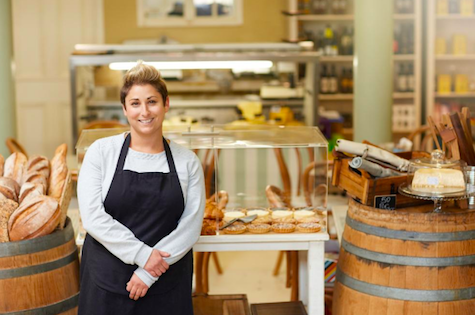For many of us, owning and operating our own small cafe may be a mere romantic pipedream. But if you’re passionate about brunch and designing your own personal brand, this may very well be your calling, and you deserve to do it justice! Here’s all you’ll need to consider when opening up your very own cafe.
1. Define your style
The natural first step is to decide what vibe you’d like your potential business to exude. This can be dictated by the kinds of food you wish to serve, by the locality where your business will preside, and by the decor you’ve collected to do up your space with. You can feel free to get as creative as you want during this preliminary style brainstorm, although when it comes to cafe furniture, you’ll want to keep chairs and tables as consistent as possible so that your space stays both functional and aesthetic rather than confused and cluttered. All of the most beautiful cafes in Melbourne have identified a personal style and adhered to this in order to present an ‘experience’. If you’re able to curate a unique vibe, you’ll be guaranteed to strike up a regular clientele.
2. Do your market research
It’s no surprise that the hospitality industry can be quite brutal if you’re unprepared, so it really pays to do your market research, and that’s not just limited to researching your competition. Be prepared to spend a little on up-to-date reports from reputable researchers to ensure that all the information you’re absorbing is still relevant and can allow you to get ahead of the curve. Food trends can be quite fickle, so whilst it’s all well and good to be able to identify what’s ‘in’ and what’s ‘out’, it’s also quite important to carve out your own niche within your locality to ensure that you’re filling a specific gap in your local foodie economy. Being thorough with this second step will also greatly simplify the process of writing up your business plan so that you can attract potential investors.
3. Find your equipment and suppliers
You’ll want all your equipment and perishables alike to come from dedicated industry suppliers so that you can purchase at wholesale prices. If you delay with solidifying these connections with your suppliers, you may be spending unnecessary funds on ingredients and equipment over your cafe’s crucial first few months of operations. Overspending is one of the prime reasons why 60% of cafes fail within their first year. Don’t let your cafe fall within this majority by taking some extra time to source the lifeblood that is your suppliers long before you ever open your doors.
4. Hire your staff
The next step after finding your suppliers is finding some passionate and reliable workers. You may already have some ideas regarding potential wait staff, chefs, and baristas, or you may even be adamant on setting up a more simplistic operation, and to each their own! Just be sure that you’ve got the manpower to support the size of your space and your projected sales, as understaffing is a genuine nightmare that you don’t want to have to deal with. As for advertising any vacant positions, it’s always best to be as upfront and open with your candidates as possible. Gone are the days where hospitality positions are seen as ‘half-way’ jobs. The reality is that there are now a growing number of dedicated baristas, chefs, wait staff, and other hospitality professionals looking for opportunities to build solid careers. These individuals are artists within their own medium, and it’s up to you to provide them with a work environment where they feel encouraged to shine. If you’re able to provide them with this positive environment, you can ensure that your business stands upon a solid and respectable foundation.
5. Set up your socials
The final step prior to opening your doors is setting up your cafe’s Facebook and Instagram pages, alongside a Google Mail account so that you can respond to Google reviews, and last but not least, a personalised website that includes a well-curated photo gallery as well as a full downloadable menu so that potential clientele can be fully informed upon their arrival. Not only will a solid social media presence allow your cafe to feel well-established, but it can also aid in attracting more potential customers, as it encourages your current customers to check-in online or post photos and videos of their time in your venue. Instagram tags and Facebook check-ins can be a valuable and cost-efficient form of marketing for your growing business.
~
If you’re able to follow these five tips, your cafe should have no major concerns over its first year of operations. Just be sure to consistently revisit your business plan and adapt it to respond to any major changes either in your local economy or in the industry at large.








 Agree (0)
Agree (0) Disagree (
Disagree (









__small.png)










